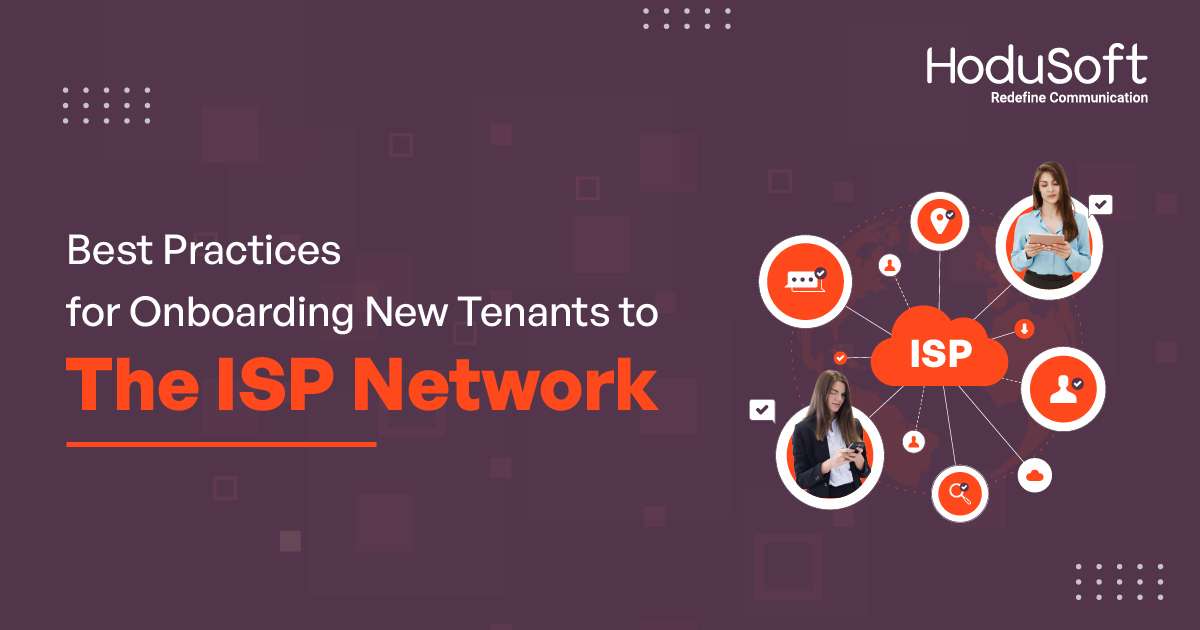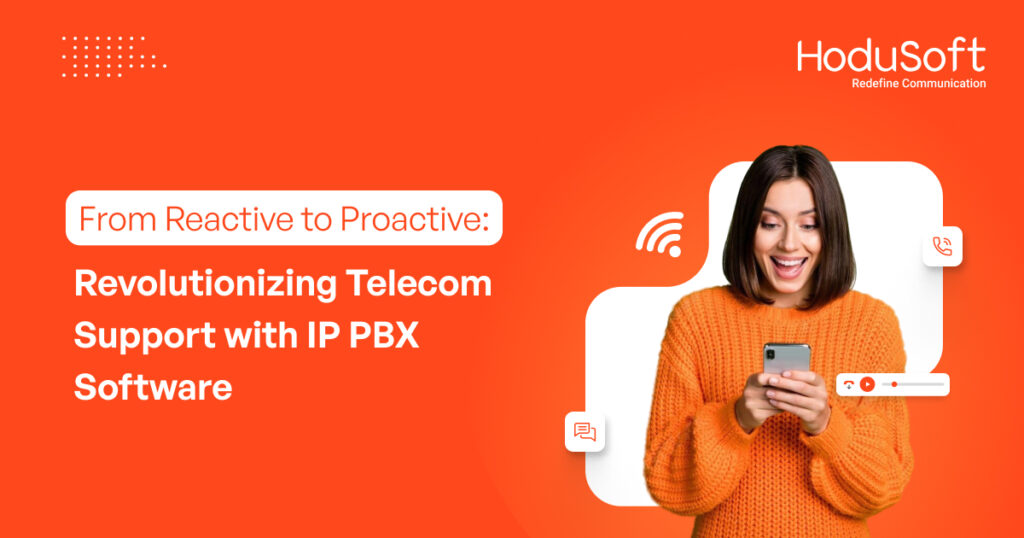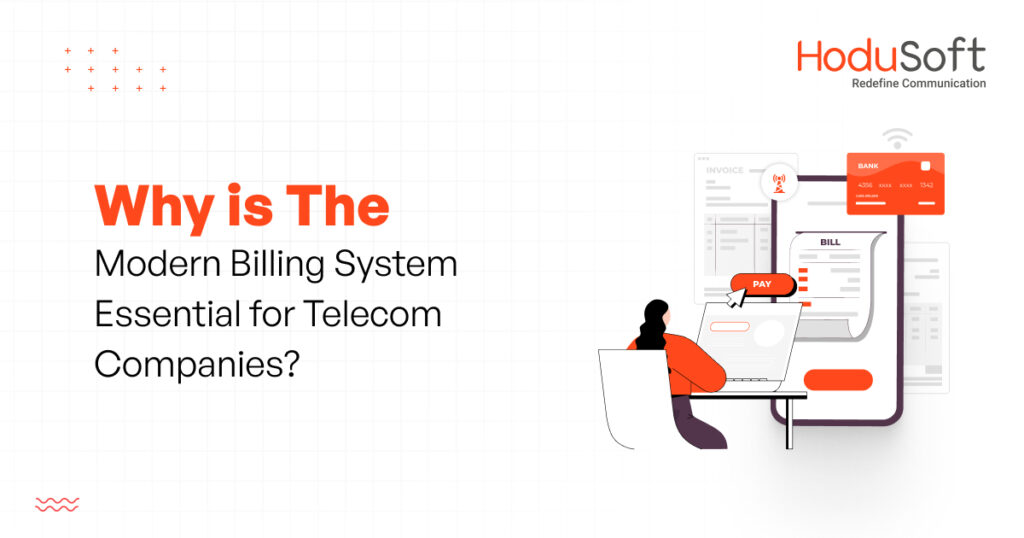Best Practices for Onboarding New Tenants to the ISP Network
As an Internet Service Provider (ISP) you know it’s not easy to acquire tenants (clients or subscribers who rent or lease Internet services from you). Especially in the last few years, due to various factors such as cutthroat competition, changing customer behavior, rapidly transforming digital landscape, and more.
It’s not just enough to provide a high-speed browsing experience, uninterrupted internet connection, a wide range of bandwidth options, and zero downtime. The expectations of customers have increased dramatically.
They want a wide range of value-added specifications such as unlimited extensions, omnichannel support, streamlined billing and payment, easy access to analytics and reports, and more.
If you happen to provide some of the unique and high-in-demand features and benefits, you will get several inquiries and you may generate high-quality leads. After the initial discussions on pricing plans and free trials, the time comes to onboard the tenant.
That’s the most important stage for an ISP as the onboarding process marks the beginning of a tenant’s journey. It’s the juncture where you establish the initial connection with your potential tenants and provide them with actual customer experience.
A smooth onboarding process can set the tone for a positive relationship, while a cumbersome one can lead to frustration and dissatisfaction. According to Paul Philip, the founder and CEO of Amity, “A poor onboarding experience is hard to come back from and is the fastest way to lose a customer. It’s critical to actively think about the entire customer journey, define it, map it, and document it.”
This blog post discusses the challenges faced by ISPs while onboarding new tenants and the best practices they can implement to make the tenant onboarding experience as smooth as possible. Let’s get started.
What Challenges do ISPs Face while Onboarding New Tenants?
The process of onboarding new tenants is not as easy as it seems. It requires ISPs to be extremely well-organized and have a streamlined process to onboard their clients. Some challenges new ISPs face are listed below:
1. Lack of understanding about services and plans
This is the biggest challenge ISPs face before they start the onboarding process of new tenants. Many tenants might not have a clear understanding of an ISP’s services and plans. It can create misunderstandings, frustration, and even improper decision-making. That’s why ISPs must provide all relevant information about their offerings before onboarding tenants.
2. Complex and lengthy sign-up process
Would you be surprised to know that a majority of people will abandon the signup process if it’s too complicated or lengthy? In today’s fast-paced world, when three out of every five job applicants stop filling up job applications mid-way if they’re too complex or lengthy, then what about tenants? As per a recent study, 86 percent of users feel bothered when they are told to fill up lengthy and complex sign-up forms. If the sign-up process of an ISP is too complicated and lengthy, it can discourage potential tenants from completing the registration.
3. Ineffective communication or unclear documentation, instructions, and terms
Communication plays a crucial role in onboarding tenants. If ISPs fail to communicate important information effectively, or if the documentation, instructions, and terms are unclear, then it can create huge confusion during the onboarding process. Tenants might struggle to understand their responsibilities and set up their connections. Worse, they might feel uninformed or neglected. ISPs should provide easily understandable documentation and clear instructions during the onboarding process via emails, text messages, or phone calls.
4. Limited customer support
Inadequate customer support when tenants encounter issues during the onboarding process can be extremely frustrating and create friction. As per a study by Thomson Reuters, 89 percent of clients go through frustrating onboarding processes. If they aren’t timely resolved, then it can create friction and result in dissatisfaction and potential churn. Poor communication and feedback channels can cause problems during onboarding. That’s why ISPs must make sure that tenants are easily able to reach helpful and knowledgeable support staff as soon as they face any issues.
5. Inadequate self-service options
Apart from ensuring fast and efficient customer support, ISPs also need to provide adequate self-service options such as frequently asked questions (FAQs), online troubleshooting guides, and chatbots. That’s because many tenants may prefer to solve issues on their own without contacting customer support. If they don’t find the proper self-service resources available during the onboarding stage, then it can cause dissatisfaction.
6. Technical problems
Did you know that inadequate technology and technical problems are among the biggest impediments to tenant onboarding experience? Technical issues such as network configuration problems or lack of hardware compatibility not only waste tenants’ time but can also pose hazards to their hardware and devices. That’s why ISPs must ensure a flawless technical setup to minimize technical problems and enhance tenant onboarding experience.
7. Complex billing and payment processes
ISPs that rely on traditional billing processes, manual payment reminders, and paper-based invoices are more likely to face this problem. Unclear and complicated billing and payment procedures not only result in payment delays but can also cause misunderstandings and confuse tenants. To mitigate that, ISPs must ensure their pricing structures are transparent and billing information is as simple and clear as possible.
8. Data security and privacy
A recent FTC staff report found many ISPs collect and share far more data from their tenants. If the sensitive data and information fall into the wrong hands, it can be extremely dangerous for tenants. That’s why protecting tenant privacy and ensuring data security during the onboarding process is extremely crucial for ISPs. They must encrypt sensitive data, implement strong security protocols, and educate tenants about cybersecurity best practices.
Benefits of Effective Tenant Onboarding
When ISPs manage to onboard new tenants effectively, they enjoy many advantages. Some of the most important benefits are:
1. Positive first impression
They say first impressions last long. The onboarding process is the tenant’s first interaction with an ISP. A welcoming and smooth onboarding experience creates a favorable impression that builds trust and confidence in the ISP’s services. That positive experience can go a long way in building a strong first impression.
2. Customer satisfaction and retention
When tenants are onboarded efficiently, they feel valued and supported. That results in customer satisfaction and retention. As they are more likely to stick with the ISP, that reduces churn rates. A good onboarding process can foster a sense of loyalty and trust between tenants and the ISP. When tenants have a positive onboarding experience, they are less likely to switch to a different ISP, resulting in lower churn rates.
3. Faster time to value
Time to value (TTV) refers to the amount of time it takes a customer to get quantifiable value from a product or service. In this context, the time to value is from the moment a new tenant onboards with an ISP till the moment they get the internet services they have paid for. An effective onboarding process ensures tenants can start using internet services promptly and seamlessly, which allows them to achieve faster time to value.
4. Positive word-of-mouth and referrals
No form of advertising can beat the good old word-of-mouth. Several studies have found that nine out of every ten customers trust referrals from family, friends, and acquaintances more than other methods of marketing. Customers acquired through referrals have a 37 percent higher customer retention rate and spend 200 percent more compared to the average customer. Tenants who have a positive onboarding experience are more likely to share their experience with family and friends, which can drive new business to the ISP.
6. Competitive advantage
Did you know that tenant onboarding can be a key differentiator for an ISP? Come to think about it. ISPs can compete against each other on price, daily data limit, internet speed, bandwidth, and many other specifications. But every ISP can make their tenant onboarding experience unique and that can provide them with a massive competitive edge.
7. Cost savings
Can a good tenant onboarding process reduce costs for an ISP? Yes, it can. Strong onboarding experience reduces the need for extensive customer support or troubleshooting in the initial phase, leading to cost savings for the ISP.
8. Reduced customer churn rate
A positive onboarding experience can considerably reduce customer churn rate. A Thinklar research found poor onboarding experience drives 68 percent of customers to switch to a competitor. Another stat found that more than three-fourths of customers are more likely to stick with a service provider following a good onboarding experience.
The IP PBX is a powerful tool for ISPs during the tenant onboarding process. It offers advanced communication capabilities, cost savings, scalability, flexibility and enhanced productivity to help businesses meet their evolving communication needs. With the help of multi-tenant IP PBX software that can support multiple users with a single instance of the software, one can assign varying levels of permission for usage among the tenants. This way, ISPs can offer IP PBX services while using the existing infrastructure.
Best Practices for Onboarding New Tenants to the ISP Network
Flawless tenant onboarding is critical for an ISP’s success. It sets the tone for the entire customer-provider relationship. Here are some best practices ISPs can implement to onboard new tenants to their network.
1. Pre-onboarding preparation
While discussing the importance of pre-onboarding preparation, how can we not quote the father of the telephony system—Alexander Graham Bell? “Before anything else, preparation is the key to success.” Meticulous preparation is indispensable before starting the onboarding process.
In this stage, it’s essential to understand the unique needs of each tenant and tailor solutions as per that. It’s best to determine tenants’ internet requirements and suggest to them the most suitable plans and services. Tenants should know who to contact and where to find information if they face any problems. In this stage, it’s extremely crucial to provide tenants with clear documentation and instructions.
2. Customized starter kits
A customized starter kit includes a curated collection of technologies (such as routers, modems, and user-friendly setup guides) to welcome new tenants and help them get started. The best thing about starter kits is that they are designed by experts to save time and effort for tenants. A well-designed starter kit not only facilitates the setup process but also creates a positive initial experience for tenants.
A recent study on customer onboarding statistics showed that over three-fourths of customers are more likely to stick with a brand after a welcoming onboarding experience. The same study also found that a dismal onboarding experience results in a 40 to 60 percent user drop-off rate after sign-up in the software industry.
3. Network infrastructure readiness
Strong network infrastructure readiness is extremely crucial for a positive onboarding experience and it’s an important factor for ISPs. Network infrastructure readiness means how prepared your network infrastructure is to handle tenant onboarding procedures. As an ISP, you must know that there is an index to measure network infrastructure readiness. You must aim to meet the desired score so that you can provide the best possible onboarding experience to your tenants.
Before onboarding new tenants, you should ensure that your network is capable of handling any additional load. For that, you need to continuously monitor and upgrade your network infrastructure to ensure network security, scalability, bandwidth availability, and optimal performance.
4. Streamlined registration and activation
As discussed in the challenges, complex registration and activation procedures can immediately turn off new tenants and demotivate them from going ahead with the process. Tenants expect streamlined registration and activation. And ISPs should focus on creating a streamlined and user-friendly process.
Clear instructions for device configuration and connection setup can enable tenants to complete the registration and activation process with minimal hassle. Also, automated activation procedures can considerably speed up the process.
5. Onsite support and assistance
Onsite support and assistance involves providing tenants with professional technical support and direct assistance in their location. Despite the digital nature of ISP services, offering onsite support during the onboarding process can make a significant difference.
Now, the question comes “How can ISPs provide onsite support and assistance to tenants whose onboarding process is still in progress?” The best way to do that is to have technicians available to assist with installation and setup providing tenants with immediate solutions to any issues they might encounter. The personal touch not only enhances the onboarding experience but also establishes a sense of trust and reliability.
6. Personalized onboarding experience
A PwC survey of 15000 customers revealed that one in every three of the respondents will stop doing business with a company after just one unpleasant experience. Nine out of ten will quit after two or three poor experiences.
It’s essential to prioritize a personalized onboarding experience. As per a study, 44 percent of customers will become repeat customers following a personalized onboarding experience. After a positive onboarding experience, 70 percent of clients are more likely to recommend your ISP to others and half of them will use your services more often.
7. Education and resources
To quote noted motivational public speaker Brian Tracy, “Continuous learning is the minimum requirement for success in any field.” When it comes to onboarding tenants, educating them is a proactive approach to enhancing their onboarding experience.
ISPs must create online knowledge bases, FAQs, and video tutorials that cover common issues and solutions. Also, they must provide tenants with cybersecurity knowledge to ensure a safe online experience and minimize the risks of security-related issues.
8. Collect feedback
What’s common between Stephen R. Covey, the author of ‘7 Habits of Highly Effective People’ and Ken Blanchard, the author of ‘One Minute Manager’? Both are highly acclaimed best-selling authors of all time. What’s another commonality between them? Their obsession with feedback! The former notably said, “It takes humility to seek feedback” and the latter said, “Feedback is the breakfast of champions.”
To know the efficacy of their onboarding process, ISPs must collect feedback from tenants. That’s because feedback can enable them to identify where they can improve, which would help them enhance their onboarding process. The best way to collect feedback is to request tenants to participate in surveys and seek their feedback on the onboarding experience and overall service quality.
All said and done,
As tenants are onboarded onto an ISP’s network to access the internet (whether it’s for personal use, business operations, or any other purpose requiring internet connectivity), a well-executed tenant onboarding process can play a huge role in ensuring the success of ISP network ecosystem. The best practices mentioned in the post can help you enhance your tenant onboarding process and build lasting relationships with tenants.
At HoduSoft, we have helped many ISPs of different sizes in their tenant onboarding process. If you want to know more about our HoduPBX – IP PBX software and get a free demo, contact us today.



